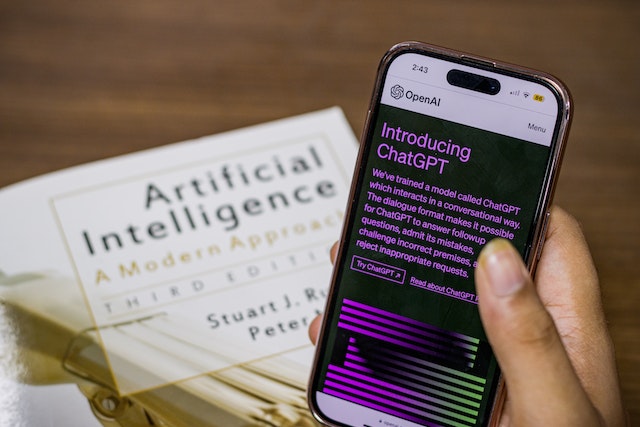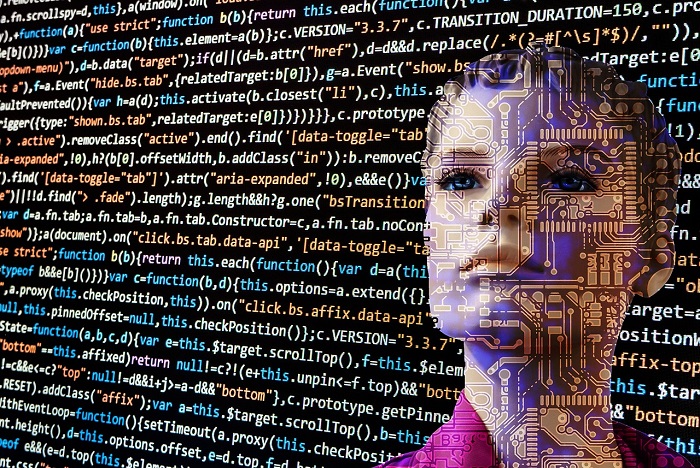Generative AI has standard use cases in generating novel, human-like text, image, video, and code.
These applications empower businesses with the ability to produce coherent contents in all their elements, with a high degree of quality, streamlining workflows, boosting creativity, and accelerating content creation processes.
This will have huge impacts on people, their working habits and, in general, to organizations.
It’s already happening, under the radar. Let’s see how.
![]()
Generative AI (GenAI) promises to create some sort of “discontinuity” (I did not want to use and abuse again the word disruption) in several areas of our personal and professional lives.
On the professional one, jobs that are very much connected to detailed and huge bodies of knowledge, and/or heavy language / communication usage and/or creative content creation, will be the most impacted.

A glimpse of “GenAI at Work”
Erik Brynjolfsson, Danielle Li & Lindsey R. Raymond wrote an interesting paper for the National Bureau of Economic Research titled“Generative AI at Work”, which is based on a study of a step-wise introduction of a generative AI-based conversational assistant in a customer care center, analyzing data from more than 5000 customer support agents.
They studied the impact of such a technology on low-skilled and high-skilled customer care agents, and coming up with some intriguing insights: GenAI, in that context, brought positive impacts on worker productivity, customer sentiment, and employee retention.
GenAI assistance drove an average increase of worker productivity by 14%, due to their augmented capacity in retrieving information of past suggestions and resolution advices and also getting each others in relation.
Additionally, they measured that new hired people were able to acquire, and use, in 2 months the same quantity of knowledge that other employees got in 6 months without the assistance of GenAI
Tacit Knowledge “at hand”
Novice and low-skilled workers benefited the most from AI assistance: best practices of high-skill workers were immediately available and any patterns or correlations directly consultable.
This effect was mainly possible because of the quick dissemination among them of the intrinsic tacit knowledge contained in those “pieces” of information and that, in the past, was challenging to collect from high-skilled people, because of their time availability and difficulties in “extracting” that type of knowledge.
Tacit knowledge or implicit knowledge—as opposed to formal, codified or explicit knowledge—is knowledge that is difficult to express or extract, and thus more difficult to transfer to others by means of writing it down or verbalizing it. This can include personal wisdom, experience, insight, and intuition (Wikipedia).

GenAi helped low-skilled people to better relate and empathize with customers, thus increasing overall resolution rate and customer satisfaction.
An additional important result for the company was that turnover percentage of new hires decreased by 8.6 points in percentage respect to the past. Before introducing GenAI, new hires were more frustrated and dissatisfied due to the steep learning curve and the difficult time in managing customers interactions with scarce knowledge and, on the other side, the necessity to keep performance KPIs always in a good shape.
The decrease in turnover allowed the company to save the money spent for training them, not dispersing the acquired knowledge and not spending new one start over again the hiring process.
Wait, wait…and what about most experienced employees?
Well, GenAI did not provide noteworthy advantages to them: no significant productivity increases, not too much knowledge to acquire anymore, already good levels of customer satisfaction, performance KPI already well addressed.
Generative AI: friend or foe?
We need to keep our feet firmly planted on the ground and not getting caught up in easy drama nor enthusiasms: the study aforementioned is “one of the first ones”.
The topic is controversial and more data is needed to see how trends on this topic will stabilize.
But.
It seems, though, that respect to previous revolutions driven by automation and robotization, where we had several job displacements more concentrated on low-skilled workers, this one could be less disrupting in that category.
However companies must act now, quickly and systematically.
Companies need to work on developing the right awareness on this topic among their people, avoiding any alarmism or over-optimism; just being pragmatic and strategizing accordingly.
Here below follows some quick examples:
- assessing impacts on their workforce, by analyzing the work activities in charge of each category of workers and identifying those that, by nature, might be the most likely to be transformed by GenAI;
- training employees on digital mindset and GenAI,
- up-skilling people on activities that will be augmented by GenAI
- re-skilling the ones whose job will be mostly replaced by GenAI acquiring adjacent or additional skills
This will help them to acquire the right tools and competences to proactively manage this big change and avoid any uncomfortable consequences.
By the way, a 2023 study from Goldman Sachs Research on GenAI, says that workers displacement from automation has historically been roughly offset by creation of new jobs: kind of zero-sum game.
What if this time, regarding the adoption of GenAI, the final balance between jobs displacement and new jobs creation will be positive?
Ways of using GenAI
In my previous post “Individuals and Interactions, in the age of Generative AI and Remote Work” I emphasized that too much use of GenAI can lead to over-reliance on this technology that, in some cases, can be wrong (e.g., AI Hallucination) and also can limit human creativity, collaboration and face-to-face communication between people.
Additionally, In order to use that technology in the best and wisest way possible according to companies’ contexts, we need to clarify how GenAI can be utilized:
- Consume it as it is available
- Customize with proprietary data
GenAI text-based systems, for instance, are based on Large Language Models (LLM).
These models have been trained on massive amounts of text data, such as books, articles, and websites, to learn the patterns and structures of language. Deep learning techniques and neural networks are used to process and understand this huge amount of data.

LLMs can be consumed as they have been developed through commercially available Apps (e.g., ChatGPT) or APIs. Actually, they can be fine-tuned, but only to a limited extent.
If you need to have results specialized to your context, you need to customize LLMs, feeding and training them with your own data. This enhances their ability to support various tasks, empowering employees, delighting customers, and driving innovative business models, which are very much tailored on your environment.
Conclusions
Generative AI asks companies to speed-up in acquiring the necessary knowledge to master it, not suffering it. Employees need to be trained and specific change management programs need to be executed.
Low-skilled workers, on one side, are the ones that can be benefited more in the short-term, even if this workers category are, again, the one that will see many of their tasks being automated or very much simplified.
HIgh-skilled workers, on the other hand, are less at risks for being “replaced”. However, standard usage of GenAI brings less value to them.
They would need to use it for more advanced tasks such as data retrieving and analysis, distilling useful insights in shorten time, performing predictive analytics, getting personalized advises for coaching and mentoring people on processes or ways of working and, even more important, planning for personal continuous learning.
All of this could be done only by customizing LLMs with company’s data.



